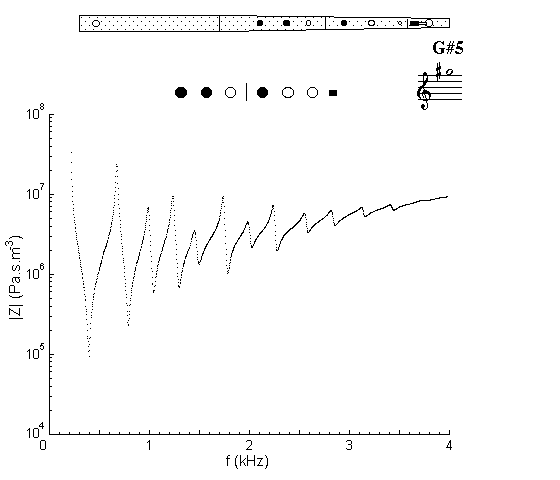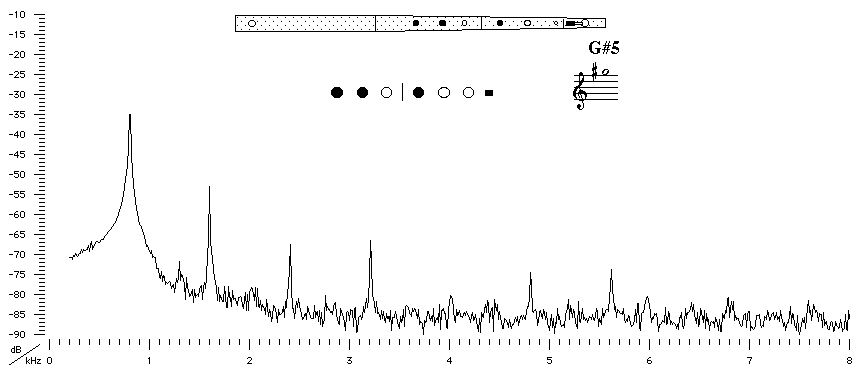| Acoustics of baroque, classical and modern flutes |
baroque flute |
G#5 and Ab5 |

|
Acoustic and Fingering Schematic Non-specialist introduction
to acoustic impedance |
This is a cross fingering, but not so severe as that used for G#4: one hole is closed below one open. Both first and second minima are flattened below their values in the A4/5 fingering: the second (used to play G#5) by a semitone, and the first less so. For more detail on cross fingering see that section in the introduction to flute acoustics, or download a brief scientific report on cross fingerings.

Sound spectrum
of a baroque flute played using fingering for G#5.
![]()
![]()
![]()
![]() You can hear G#5
played by Matthew Ridley.
You can hear G#5
played by Matthew Ridley.
| Acoustic measurements are available for these flutes - modern B, modern C, classical C, classical D, classical flared, baroque Sound clips are available for modern B, classical flared and baroque |
To compare flutes, it is easiest to open a separate browser window for each instrument. |